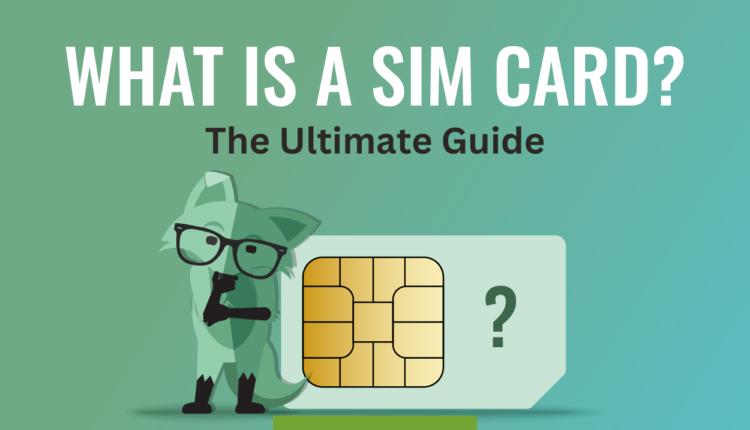The Essential Guide to SIM Cards: From Basics to Future
In today’s digitally driven world, our smartphones are essential tools for communication, entertainment, and information access. But have you ever wondered how these devices seamlessly connect to cellular networks, allowing you to make calls, send messages, and browse the internet? The answer lies in a tiny yet powerful component: the Subscriber Identity Module (SIM) card.
Understanding Sim Card
What is a SIM Card?
Imagine a miniature chip carrying a unique 15-digit code, like a digital fingerprint – that’s the essence of a SIM card. This (15-digit SIM card code) identifies your phone on mobile networks worldwide. Every phone, from the latest flagship to a basic feature phone, requires a SIM card to function on cellular networks.
ad
Types of SIM Cards
SIM cards come in various forms, each designed to cater to specific devices and technologies:
Standard SIM:
The traditional SIM card, also known as a mini-SIM, is the largest and is commonly used in older mobile devices.
Micro SIM:
Smaller than the standard SIM, the micro SIM is widely used in mid-range and older smartphones.
Nano SIM:
The smallest SIM card available, the nano-SIM is utilized in modern smartphones, including the latest iPhone and Android models.
eSIM:
An embedded SIM (eSIM) is integrated directly into the device’s hardware, eliminating the need for a physical SIM card. It offers greater flexibility and convenience, allowing users to switch between carriers without changing SIM cards.
Beyond Identification: Unmasking the Functionality of a SIM Card
The SIM card serves several critical functions beyond just identification:
Network Authentication
Acts as a key, granting access to voice calls, data services, and SMS messaging by authenticating your phone on the cellular network.
Contact Storage:
While storage capacity varies, some SIM cards can hold a limited number of contacts, enabling you to transfer contact information between devices, especially useful when switching phones.
Mobile Wallet:
Certain SIM cards support mobile payment functionalities, allowing you to make secure transactions using your smartphone at participating stores, eliminating the need to carry cash or physical credit cards.
Roaming Capabilities:
Enables seamless roaming, allowing you to stay connected to cellular networks even while traveling internationally. This eliminates the need for purchasing a local SIM card at your destination, ensuring uninterrupted communication.
Activating and Managing Your SIM Card: A Step-by-Step Guide
Activating and managing your SIM card involves several straightforward steps:
Activation Process:
Before you can enjoy network services, your SIM card needs to be activated by your mobile carrier. This usually involves following instructions provided by the carrier, which might include entering a specific code or visiting their website.
Registration:
To comply with regulations and ensure security, you’ll need to register your SIM card with the mobile carrier. This typically involves providing personal information like your name, address, and identification documents.
Top-Up and Recharge:
Depending on your plan, you might need to top up your SIM card with prepaid credit or subscribe to a monthly plan to access network services. Most carriers offer convenient online or in-store options for recharging your SIM card.
SIM Card Replacement:
If your SIM card gets lost, stolen, or damaged, don’t worry! You can request a replacement SIM card from your mobile carrier. This might involve a small fee and following the activation and registration process again.
Security and Privacy: Protecting Your Data on the SIM Card
Ensuring the security and privacy of your SIM card data is crucial. Here are some key measures in place:
PIN Protection:
You can set a Personal Identification Number (PIN) to act as a password, preventing unauthorized access to your SIM card and the data stored on it, and safeguarding your phone’s security.
PUK Code:
If you forget or enter your PIN incorrectly multiple times, your SIM card might get locked. The Personal Unblocking Key (PUK) code provided by your carrier allows you to unlock the SIM card and regain access.
Data Encryption:
SIM cards utilize encryption algorithms to scramble the communication between your phone and the cellular network. This protects sensitive information like your identity and call details from being intercepted by unauthorized parties.
The Future of SIM Cards: Embracing Innovation and Advancements
The future of SIM cards is brimming with exciting possibilities:
eSIM Technology:
The adoption of embedded SIMs (eSIMs) is expected to surge. These digital SIMs are directly embedded into smartphones, eliminating the need for physical cards, and offering greater flexibility and convenience for users and mobile carriers alike.
IoT Connectivity:
SIM cards are playing a key role in the Internet of Things (IoT) ecosystem, enabling secure and reliable connectivity for a vast array of devices, ranging from smart home appliances to wearables, fostering a truly interconnected world.
Enhanced Security Features:
As technology evolves, so do security threats. SIM card manufacturers are constantly working on improving security features to combat emerging threats and vulnerabilities in mobile networks, ensuring your data remains protected.
Conclusion:
The unassuming SIM card, despite its size, remains the powerhouse of mobile connectivity. It acts as your phone’s ID, enabling calls, texts, and internet access. Beyond the basics, it can even store contacts and facilitate mobile payments. As technology progresses, eSIMs offer greater convenience, while traditional SIM cards remain crucial for the ever-expanding Internet of Things (IoT). By understanding the functionalities and future of SIM cards, you’re empowered to make informed choices and stay connected in a world of ever-growing possibilities.
ad



Comments are closed.